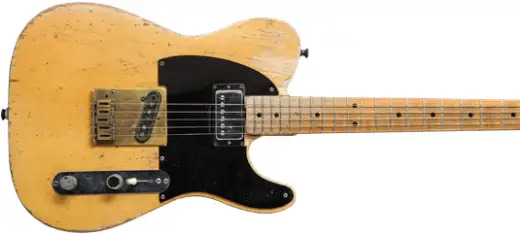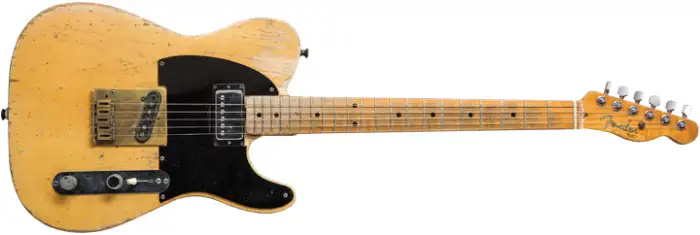Here’s the Thing!
Let's get straight to the point!
Open G Guitar Tuning
‘Open G Tuning’ — D, G, D, G, B, D (from the low to the high E string) — is an alternative way to tune your guitar.
Keith Richards
Open G tuning is not exclusive or unique to Keith Richards of The Rolling Stones, however, it is probably ‘Keef’ who has made this tuning so widely known during the last thirty years or maybe even more.
History Lesson — yawn (no, honestly it’s short)…
Before getting into this tuning, I would like to give some very brief background, literally in broad strokes, not in precise detail.
Prior to becoming a mainstay alternative tuning in Rock music, ‘Open G Tuning’ had been used widely, for perhaps the last one hundred years or so, in what we could generally term ‘American Folk’ music specifically ‘Country’ and ‘Blues’ music (themselves both huge influences on Rock music). There are many possible reasons for this.
Here listed below are a few.
‘Open G Tuning’ contains all the notes (and no others) of the basic triad chord of G Major (namely the notes G, B & D). This means that a major ‘Barre’ chord (or ‘Bar’ chord) that to fret would need all four fingers of the left using standard guitar tuning (E, A, D, G, B, E), can be played with just one finger, barred across all six strings.
If you follow this logic through, the same applies to other ‘opening’ tunings, for example ‘Open D Tuning’ (D, A, D, F#, A, D) or ‘Open E Tuning’ (E, B, E, G#, B, E), because they all contain exactly the same intervals, just for different major chords (Open D has all the notes for D Major, Open E has all the notes for E Major).
This is what Keith Richards had to say about this, specifically relating to the distinctive guitar sound of The Rolling Stones's 1968 recording of their song "Jumpin' Jack Flash":
“I used a Gibson Hummingbird acoustic tuned to open D, six string. Open D or open E, which is the same thing – same intervals – but it would be slackened down some for D. Then there was a capo on it, to get that really tight sound. And there was another guitar over the top of that, but tuned to Nashville tuning. I learned that from somebody in George Jones' band in San Antonio in 1964. The high-strung guitar was an acoustic, too. Both acoustics were put through a Philips cassette recorder. Just jam the mic right in the guitar and play it back through an extension speaker.”
In Mexico during the 19th Century, many contemporary guitarists tuned their guitars to open G tuning.
Many Mexicans were shipped to Hawaii as migrant labourers during the mid-19th Century (they took their Open G tuned guitars with them).
At the same time, many migrant labourers from India also arrived in Hawaii. They brought with them various stringed instruments (for example, sitars, sarods, and veenas). Some of these instruments were played with the neck in a horizontal position across the player’s lap, with the fretboard facing upwards. They also brought some classical Indian playing techniques, which included using a gourd or a flat smooth piece of metal to fret their instruments and slide along the strings.
During the second half of the 19th Century in Hawaii, the Mexican use of open G tuning merged with the Indian use of a slide and the horizontal upward-facing playing position to create what is now known as a Hawaiin Guitar (or Lap Steel Guitar), often using what is referred to as slack-key tuning (which further developed into the Hawaiin slack-key guitar finger-picking style). Additionally, the open G/slack-key tuning facilitated using a slide to easily bar, for example, Major chords, which greatly contributed to the development of the Lap Steel/Hawaiian Guitar, and associated playing styles.
It’s also worth noting that later (so during the second half of the 20th Century) an Indian slide guitar (with as many as 21 strings), the Mohan veena, was developed based upon a Hawaiin archtop guitar.
Finally, getting back to ‘American Folk’ music (Blues and Country), slide guitar playing (using open G aka slack-key tuning) was most likely influenced by the Hawaiian guitar craze that swept through the USA during the early part of the 20th Century. The open G tuning soon became a mainstay for many Blues and Country players (as did the use of a slide). This of course later influenced many Rock guitarists… not least, Keith Richards — for whom, the use of open G tuning has become a hallmark.
Open G Guitar Tuning and Keith Richards
As stated, ‘Open G Tuning’ is D, G, D, G, B, D (from the low to the high E string).
To tune to open G, drop your low E down a full tone to a D, your A down a full tone to a G and your high E down a full tone to a D.
Keef often played without his low E string, so G, D, G, B, D. Many of his Fender Telecasters do not have a low E string and are tuned to open G. Probably the most famous is Micawber, a 1953 Fender Telecaster, gifted to him by Eric Clapton.
A key part of Keith Richard’s distinctive style is the use of a single finger to bar a Major triad. He also very often goes from a I chord (so in the key of C this is C Major) to some kind of IV chord (very often, an add9 chord, so in C that would be Fadd9). From this simple foundation, he has come up with many distinctive guitar riffs.
Many of The Rolling Stones's signature tunes use open G tuning. Here below are a few.
“Jumpin' Jack Flash” (the version most often played live, not the 1968 recording from the album Beggars Banquet)
Here below is the Man Himself talking about Open G Tuning.
Here below is an amazing recent interview (October 2023) with Keith Richards.
And here below he has a bit of fun demonstrating his 5-string open G technique.
Last but not least, here below is the original studio recording of “Jumpin' Jack Flash” (which had — if you recall, as Keith Richards explains in the quote above — guitar parts NOT tuned in open G, but in open D, then capo-ed). Below that is an officially Rolling Stones-sponsored guitar tutorial given by the great Marty Scharwtz of the open G tuned live version of “Jumpin’ Jack Flash” that Keith Richards uses on most of The Rolling Stones tours. It’s a great tutorial, and I can pretty much recommend anything that Marty Schwartz does… which is why there is also (below) his tutorial of the open G tuning version of “Start Me Up”.
Please note: I have another infotainment channel on Substack, called Unleashed & Unlimited, where I post podcasts, articles and content unrelated to music.🖋🎥🎙








